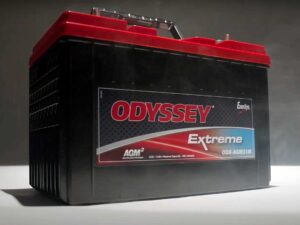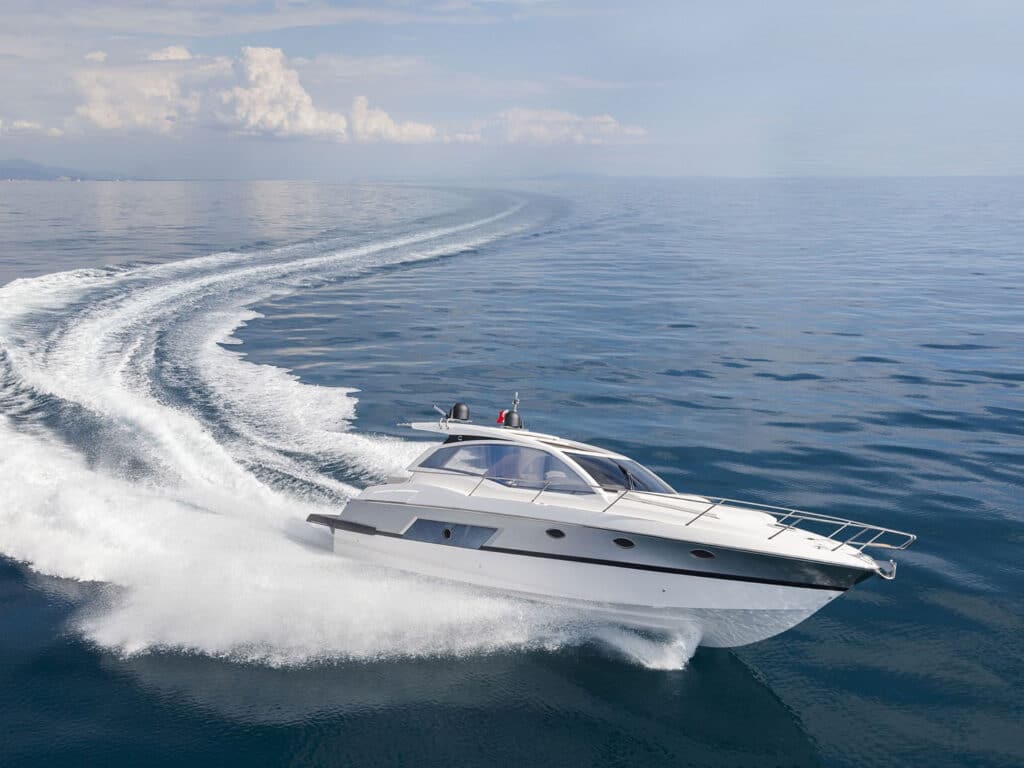
Marine starting batteries have a singular, but all-important job — to reliably crank over your engine whenever you turn the key or press the start button. As that moment could be the start of a long-awaited holiday weekend, or in response to severe weather or medical emergency, it’s vital that your starting battery is up to the task.
Here are the top traits of a marine starting battery.
Battery Types
There are three primary types of marine starting batteries, Flooded, Absorbed Glass Mat (AGM) and Gel. Flooded electrolyte batteries are cost-effective, but can rapidly discharge if not kept fully charged or an unsealed battery’s cells topped with distilled water. They also need to be housed in vented compartments, kept upright to avoid possible spills and are more susceptible to long-term damage from vibration caused by waves and wakes. In contrast, AGM batteries contain electrolyte within spongy fiberglass mat; gel batteries use silica to convert their electrolyte into a jelly-like state. Though notably more expensive, both are far more durable and low-maintenance. Sealed designs require no watering, prevent spills and splashing and better withstand the jarring of rough water.
As to charging, flooded and gel batteries are more susceptible to heat, resulting in longer charging times. Gel batteries in fact can be rendered useless from too much heat during faster charging. The design of AGM batteries allows them to be charged up to five-times faster than a flooded battery, but keep in mind both AGM and gel batteries require temperature-sensing, voltage-regulated chargers to avoid damage.
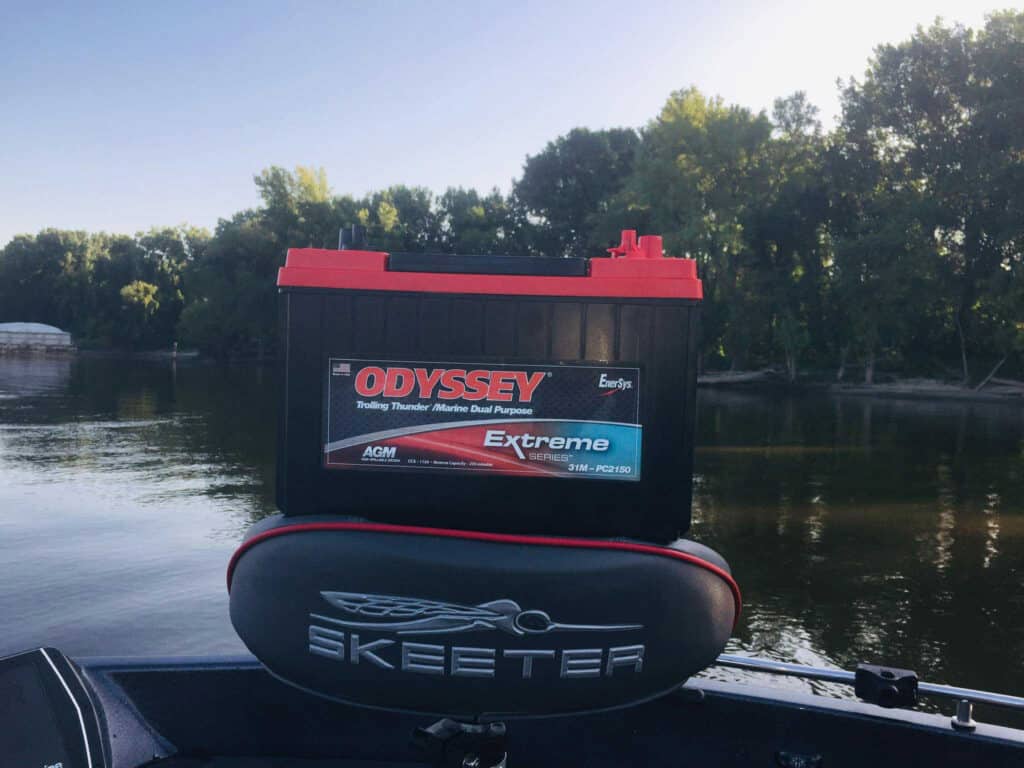
Ready For Their Role
Starting batteries need to produce a large amount of electrical energy for a relatively short period of time. Tasking a starting battery with powering onboard electronics — from lighting and bilge pump to that booming sound system during a long afternoon partying at sandbar or cove — may not only shorten its lifespan, but possibly drain the battery’s power and leave you unexpectedly stranded. Best to leave those other power draws to a separate “deep-cycle” battery that, while maybe not as potent, is designed to deliver steadier power over a much longer period of time.
Should you require a singular solution, look for modern “hybrid” designs that promise enough deep-cycle reserve power to power onboard electronics while retaining their potent starting power. Examples include Odyssey’s Extreme and Performance series, which can deliver twice the power and last up to three-times longer than conventional lead-acid alternatives. Odyssey accomplishes this feat in part by using 99-percent-pure lead plates that are extremely thin, allowing them to be densely packed and offer maximum plate surface area.
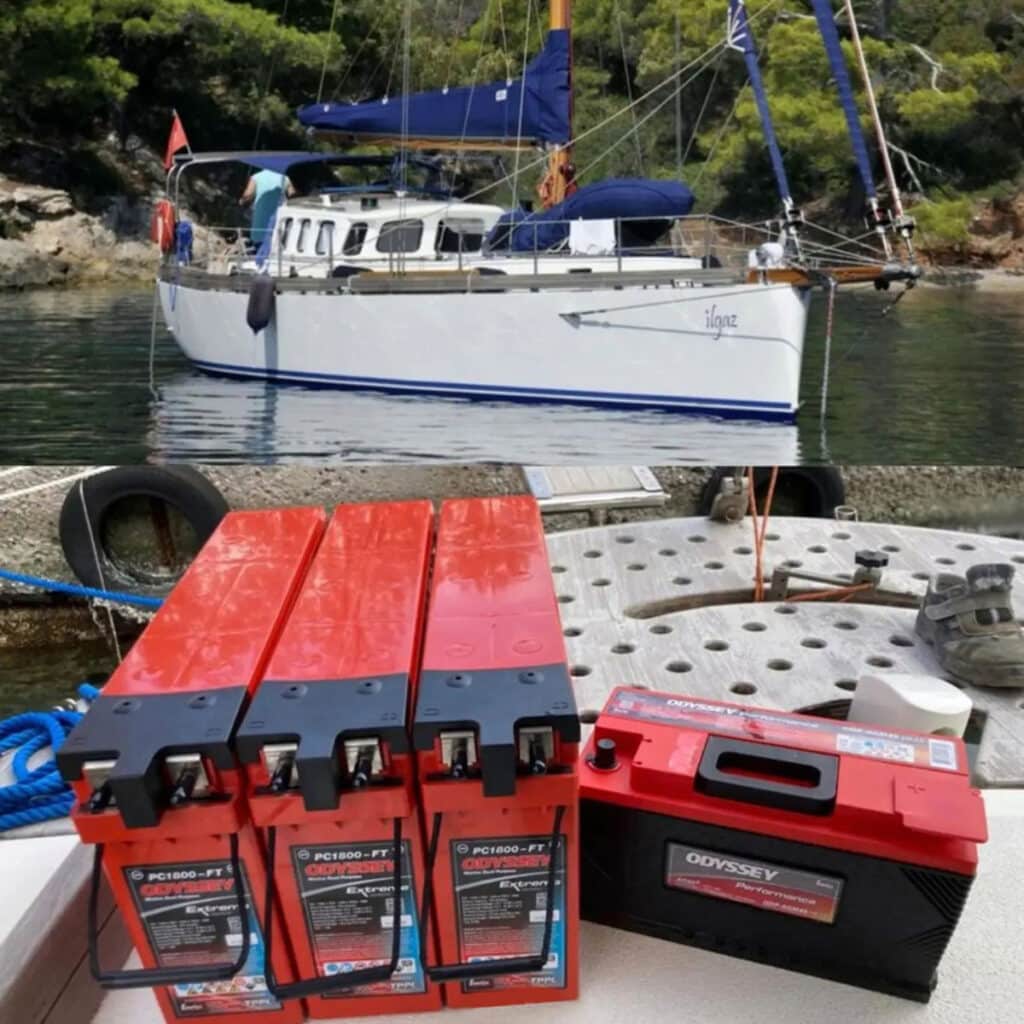
Sufficient Cranking Amps
A starting battery’s power is measured in cranking amps (CA), the amount of electrical current a fully charged battery can discharge over a 30-second period in normal (above-freezing) conditions. Find your engine’s required cranking amps in the owner’s manual or ask your dealer. Keep in mind, when it comes to starting batteries bigger doesn’t always mean better. Technically, there’s no need to buy a battery rated for more cranking amps than your engine requires.
Marine-Specific Design And Construction
Insist on batteries that are designed for marine use. In addition to the abuse from jarring waves and wakes, the marine environment is notoriously harsh. Look for materials like brass or brass-plating on terminals to provide secure cable connections that will remain free from corrosion. Odyssey’s robust intercell connections are cast to the plates and bonded to resist vibration and eliminate internal sparking. Compressed Absorbed Glass Mat plate separators also provide extreme vibration resistance and prevent spills, allowing batteries to even be installed on their side.
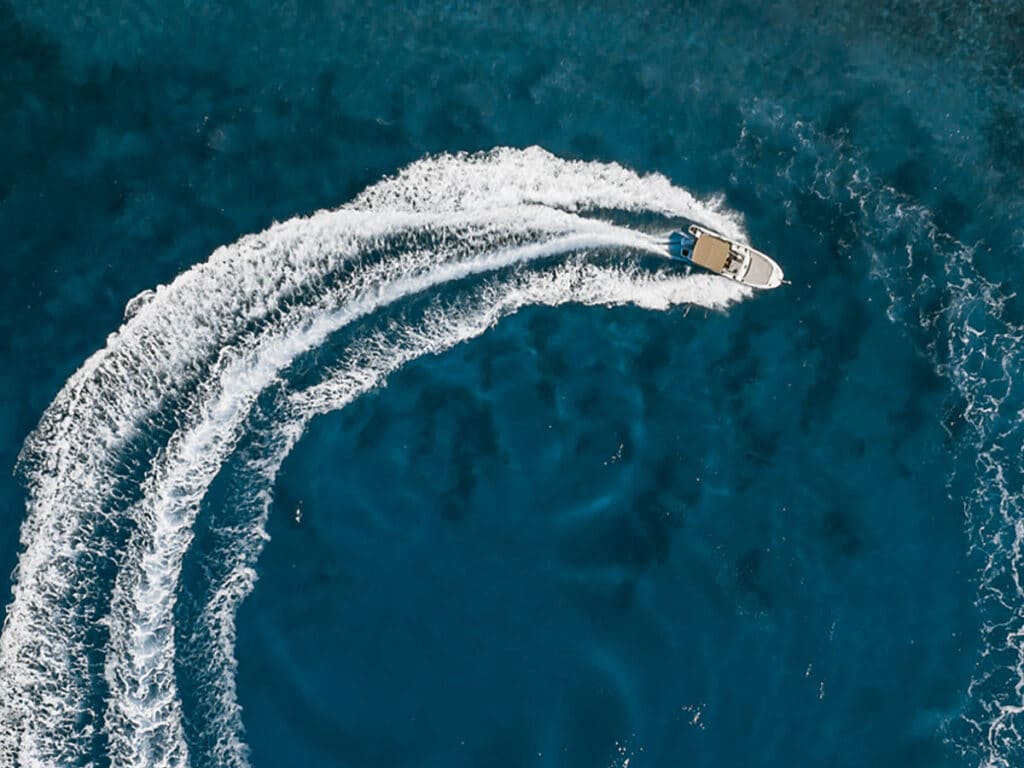
Most Valuable Player
A marine starting battery is literally the key to a safe, fun-filled day on the water. Choose a quality battery that matches your needs — and is built for the unique demands of the marine environment — and you’ll enjoy not only the day but many stress-free seasons to come.




